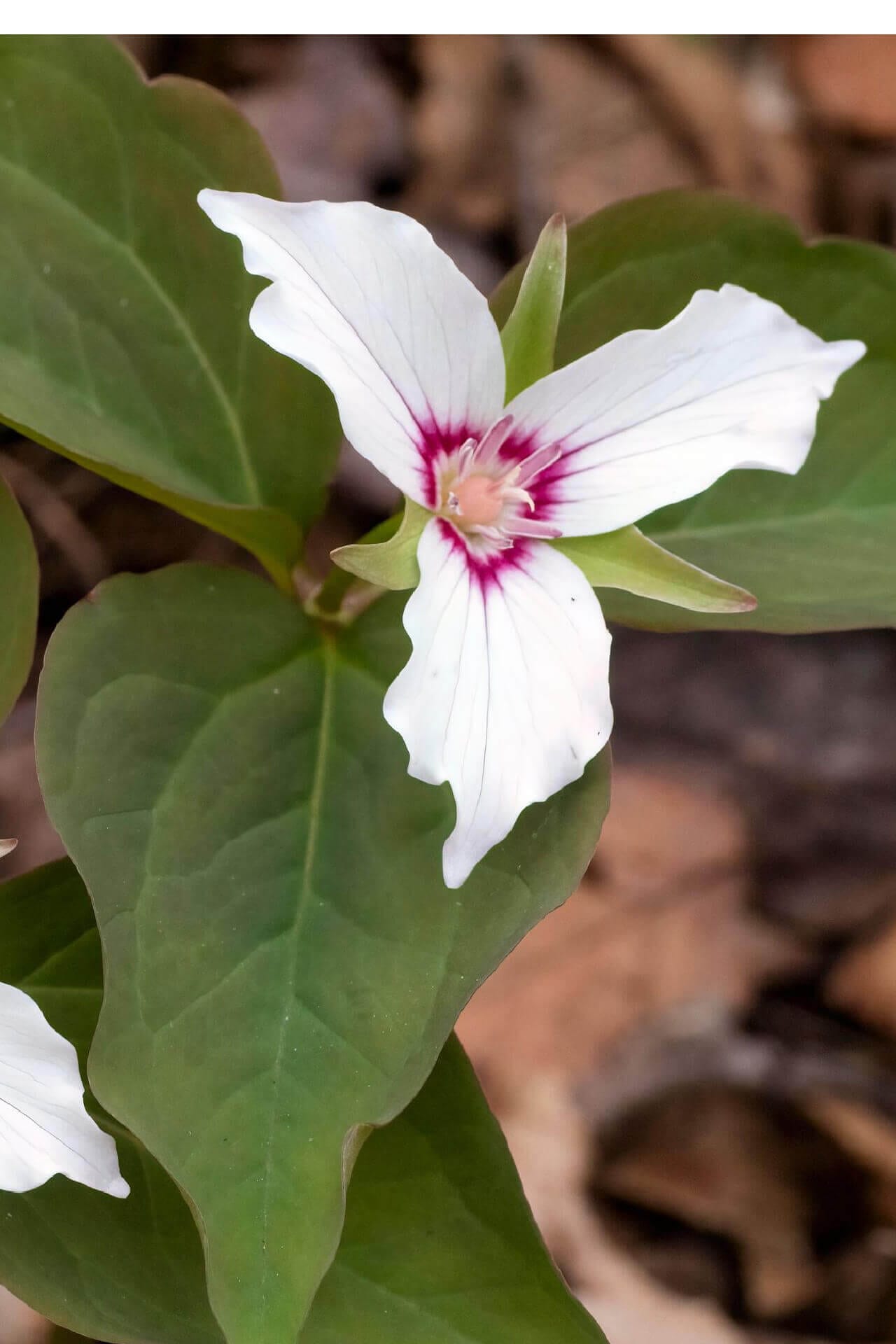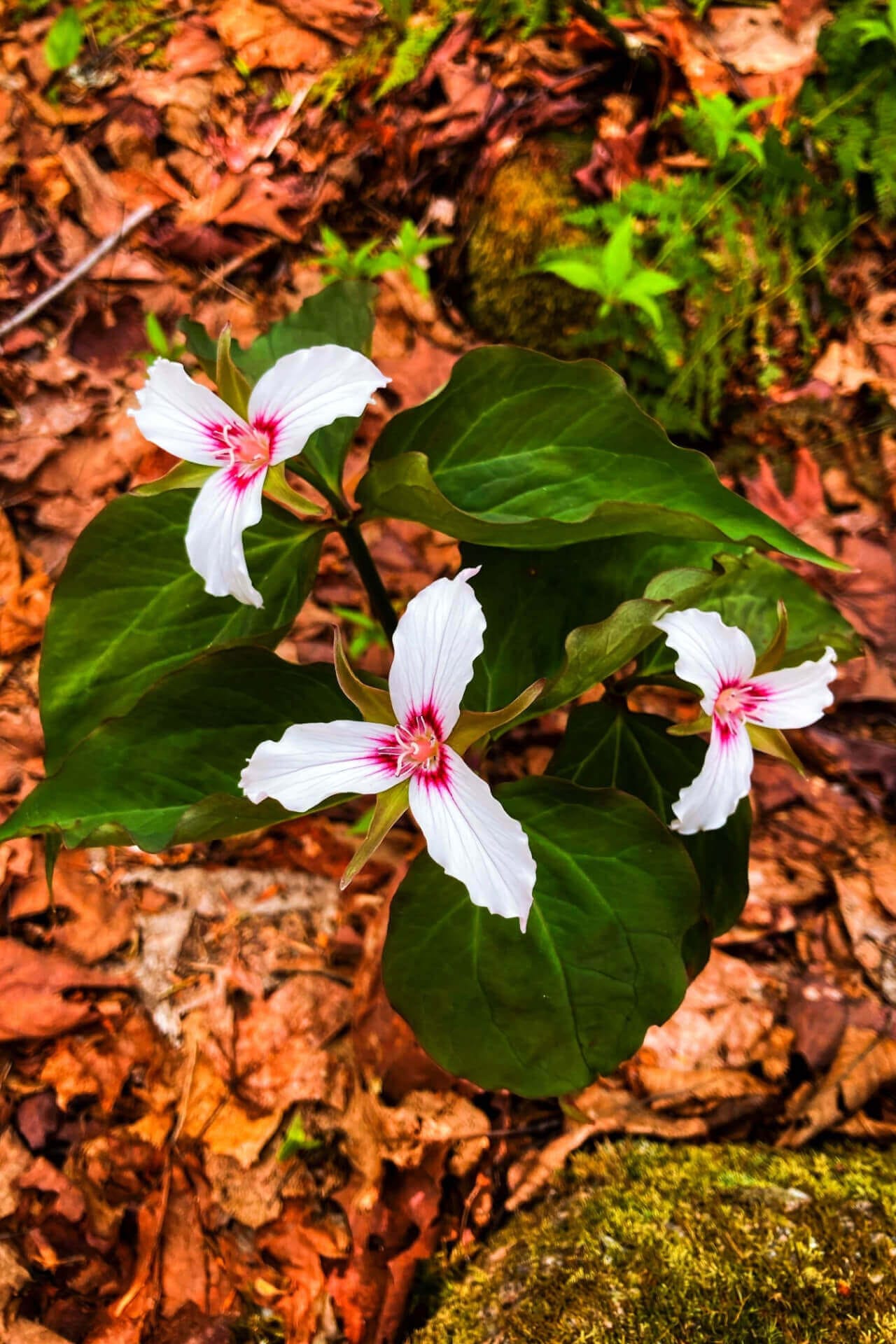Painted Trillium
Painted Trillium
| Order | Percentage Discount | ||
|---|---|---|---|
| 2-5 | 25% Off | ||
| 6-10 | 30% Off | ||
| 11-25 | 35% Off | ||
| 26-50 | 45% Off | ||
| 51+ | 65% Off | ||
Couldn't load pickup availability
Painted Trillium - Trillium Undulatum
Painted Trillium is a beautiful perennial wildflower native to North America. The plant is known for its striking three-petaled pink, red, or white flowers and attractive foliage that creates a carpet-like effect on the forest floor.
Plant Appearance
The plant is relatively small and grows to a height of about 12-18 inches. Its flowers are the most striking feature, with three petals that are usually white but can be pink or red. The petals are arranged in a triangle shape, with the plant leaves forming another triangle around them. The plant leaves are broad and oval-shaped, with a glossy texture and a dark green color.
Painted Trillium's Habitat and Range
It is a woodland plant that prefers moist, well-drained soils. It is typically found in forests, woodlands, and shaded areas, often near streams or other bodies of water. The plant is native to the eastern United States and Canada.
Cultural Significance
The plant has a rich cultural history and has been used for medicinal and culinary purposes for centuries. Native American tribes used it to treat various ailments, including respiratory and digestive issues. The plant was also a food source, with the young leaves and flowers eaten raw or cooked.
Benefits
This is a fascinating plant with many unique characteristics and cultural significance. Its striking appearance and delicate beauty make it a popular choice for gardens and natural areas but also requires protection and preservation. By learning more about this plant and supporting conservation efforts, we can ensure that it remains a cherished part of our natural heritage for generations.
The plant is a true masterpiece. It thrives in unique ways that make this vibrant flower stand out. This wildflower is usually spotted with stunning white petals that cover the whole leaflet. The petals fade into the white perfectly.
This gorgeous flower has only three petals framed by another three green pointy petals. This enchanting flower is typically found in the northern woods. During the middle of spring, these flowers will bloom until late spring. It is a great flower to have in your garden.
It will be a great addition to your beautiful garden. This plant only needs a little maintenance. Keeping these beauties hydrated and in the shade will be great. Not only will your garden glow, but it has many benefits.
It repels deer and rabbits. Maybe you are growing food and want to keep them away from what you worked so hard for. This flower can grow as tall as 8 inches to a maximum height of 18 inches. It is known to be about 12 inches wide. Since this plant prefers the shade, the growing rate is slower.
This graceful flower's shine captures many. It is trendy in North America and has been seen in a few Asian countries, such as Japan and Korea.
This Is How Your Plants Will Look upon Delivery
Shipping date depends on the date displayed and chosen when you order from the product's page.
We only accept returns on plants verified dead. If you think your plants have died, we offer a 1 year warranty, please use use this File a Claim Link to verify dead plants and start with return warranty process.




